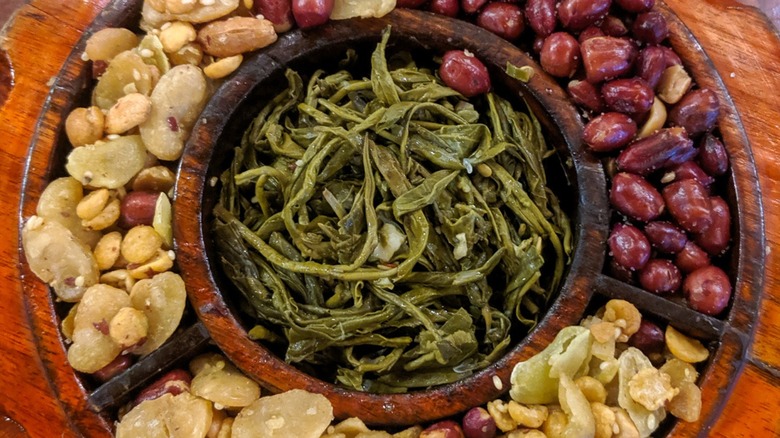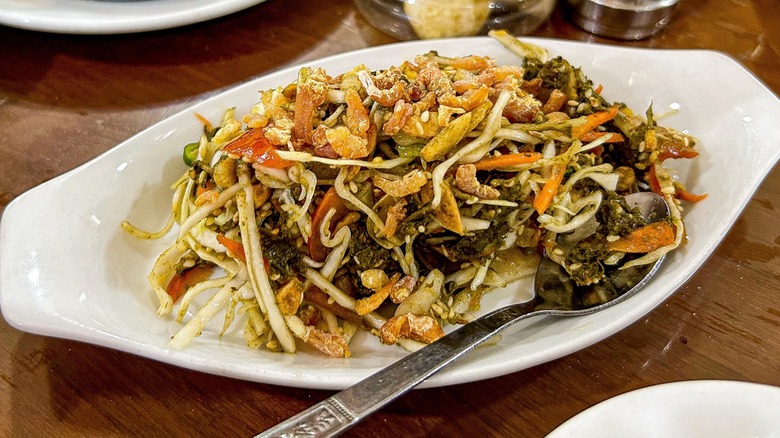The Important Cultural Origins Of Pickled Tea
While pickling vegetables, meat, and even fruit is a long-standing preservation technique used worldwide, pickling and eating tea leaves is unique to Myanmar (aka Burma). Pickled tea, also known as lahpet (pronounced "lah-pay"), is actually made from fermented rather than pickled tea leaves. The dish is created by aging young tea leaf buds in their own juices very slowly to create a dry, earthy, umami-rich condiment. Lahpet has been an important part of Burmese culture since ancient times when fermented tea leaves were symbols of peace.
According to historians, Burmese royalty would share pickled tea leaf salad upon settling a legal dispute as a sign of good faith. It is also served at other cultural ceremonies, such as weddings and spiritual rituals. Today, the people of Myanmar have extended the cultural significance of lahpet from a peace offering to a symbol of hospitality. From traditional ceremonies to school snacks to informal house visits, serving and sharing lahpet is an essential practice.
The act of eating and sharing lahpet is itself a ritual. Lahpet is accompanied by beans, sesame seeds, chiles, tomatoes, peanuts, dried prawns, and lemon or lime juice, each ingredient displayed in its own compartment on a circular serving dish. These ingredients are presented to guests upon arrival so that they can build their own pickled tea leaf salad. Lahpet salad as an offering of hospitality isn't supposed to be a meal, but a light snack that you can spoon into your hand or onto a small plate.
There are many pickled tea variations
Pickled tea is a part of everyday life in Myanmar and is enjoyed by all ages and ethnic groups. While many still ferment tea leaves at home, you can also buy fermented tea leaves as bottled products in most grocery stores, food stands, and online retailers. The tea leaves used are in the green tea family and feature a wealth of healthy compounds and antioxidants. Like most teas, the leaves also contain caffeine. For this reason, students often partake in a social snack of fermented tea leaf salad as a midday pick-me-up.
Lahpet as a ritualistic snack and symbol of hospitality is known as ahlu-lahpet. "Ahlu" translates to "donation ceremony" in the Burmese language. Ahlu-lahpet is the term used to describe the communal snack experience of building your own salad at weddings, spiritual events, funerals, and legal dealings. The less formal form of lahpet is called lahpet-thoke (pronounced "lah-pay toh").
Lahpet-thoke (pictured) is served as more of a meal or salad, and includes the same mixture of seeds, nuts, beans, and tea leaves, but also contains shredded cabbage and a dressing with oil, fish sauce, or soy sauce. It's eaten in a bowl with family, school, or work friends at home, as well as in street stalls and at sit-down restaurants to wash down with a hot cup of tea. If you ever get a chance, don't hesitate to try this most unique type of pickled vegetable.

